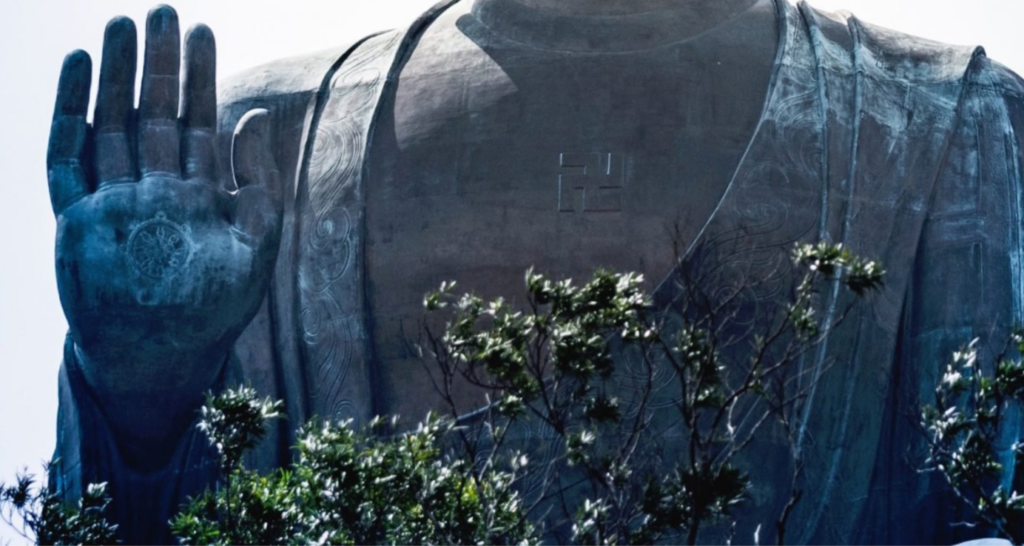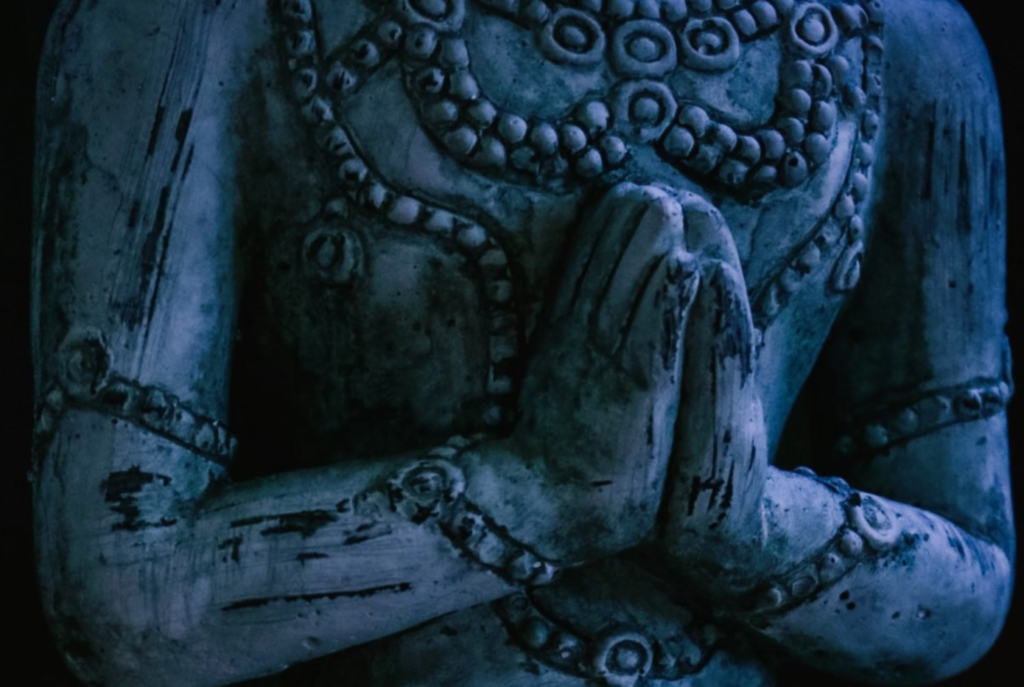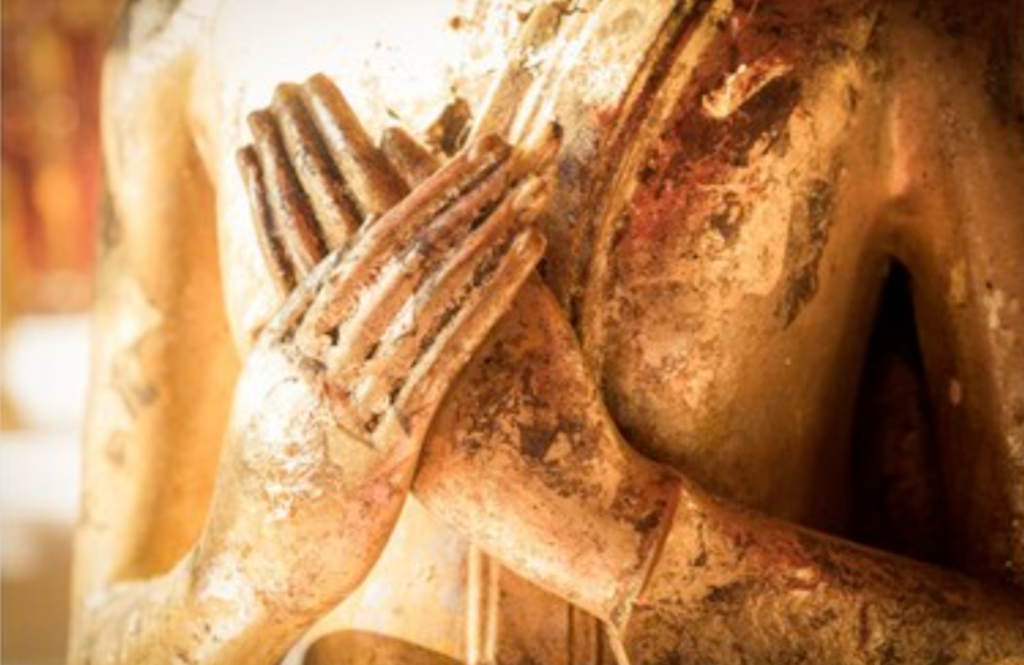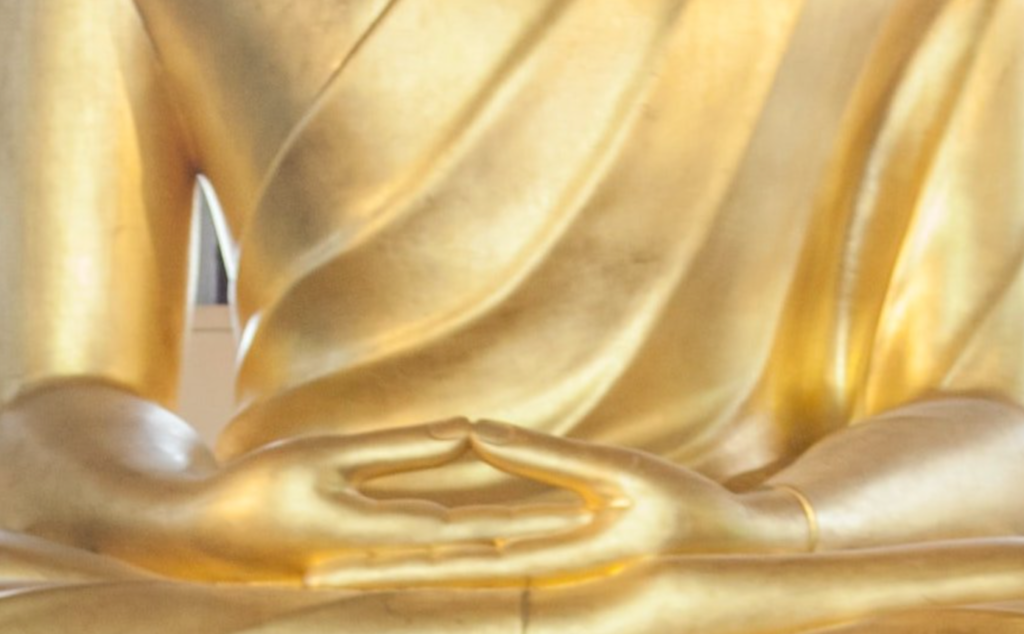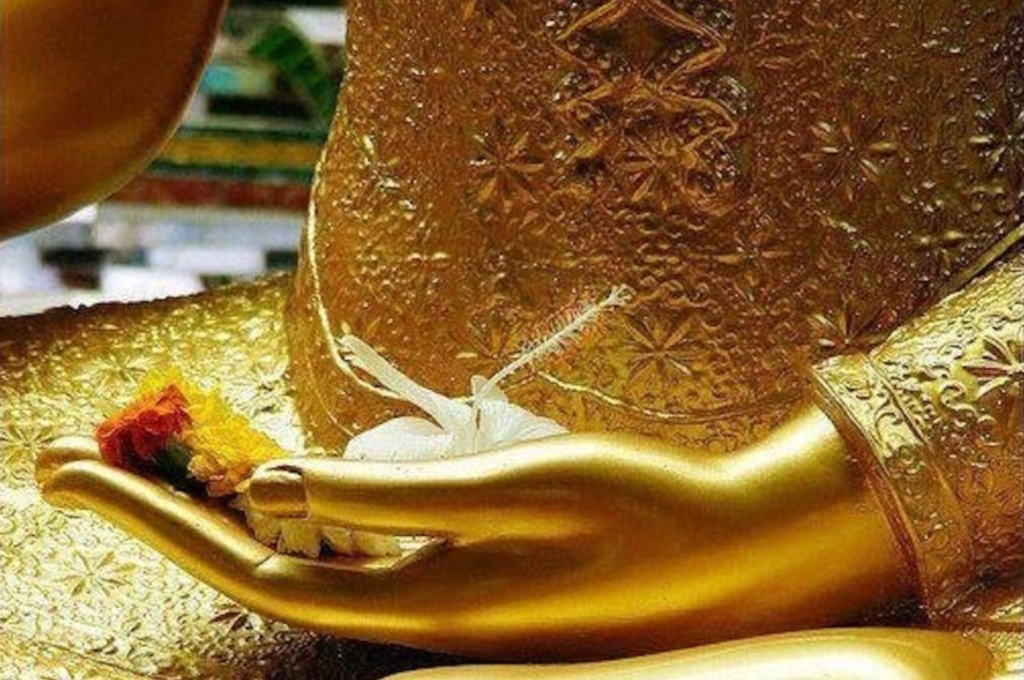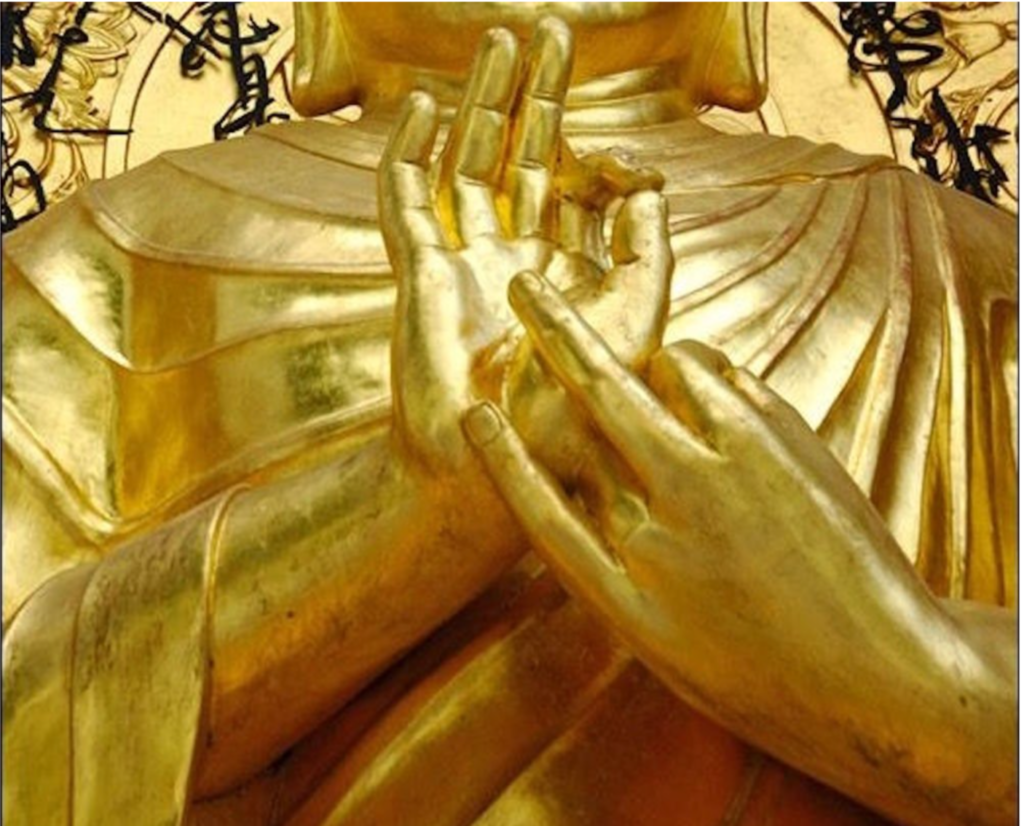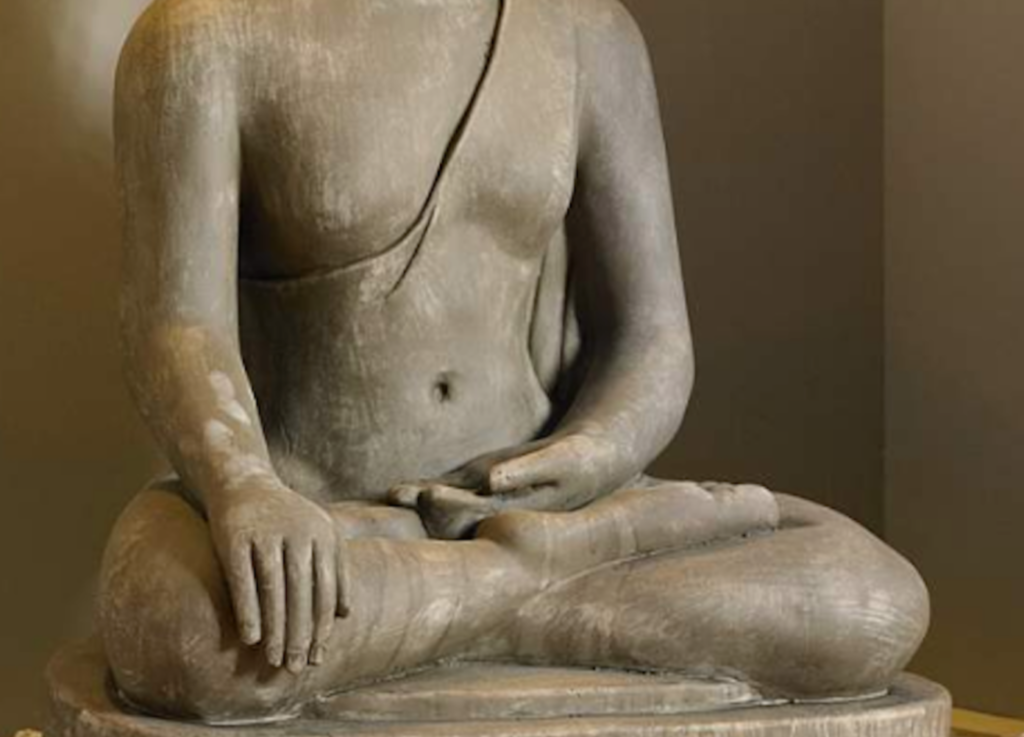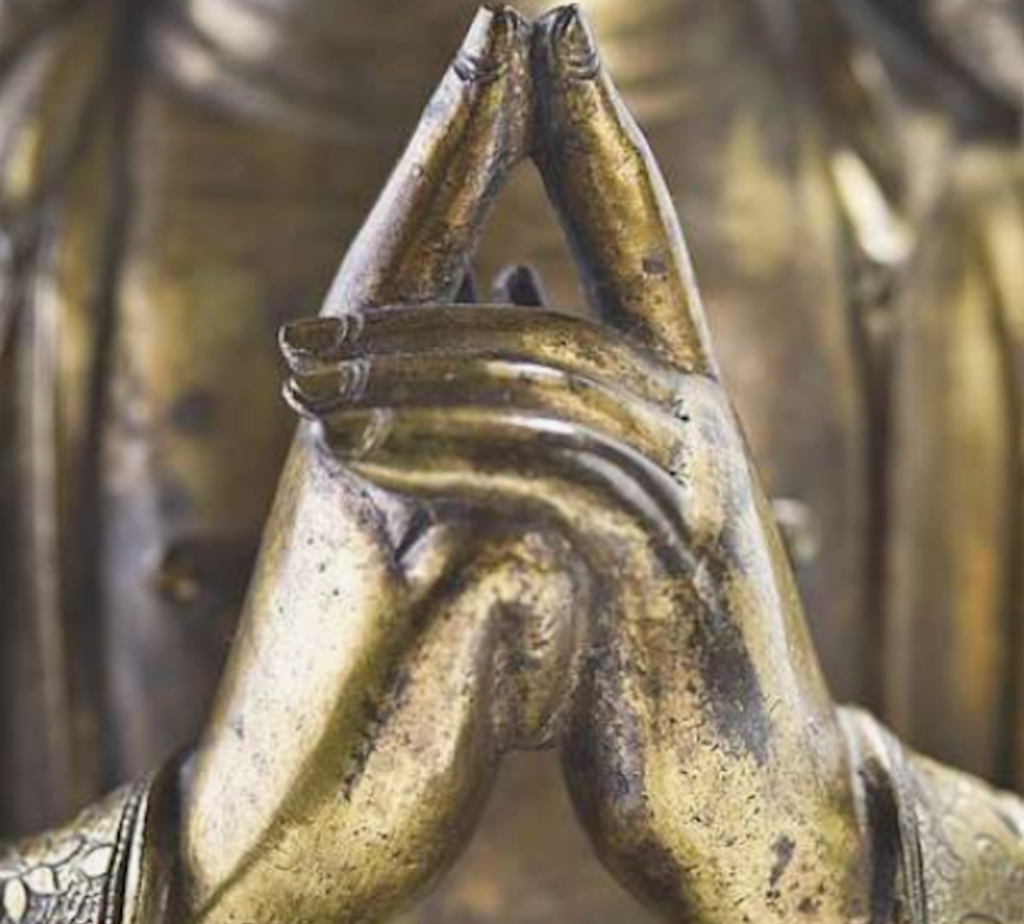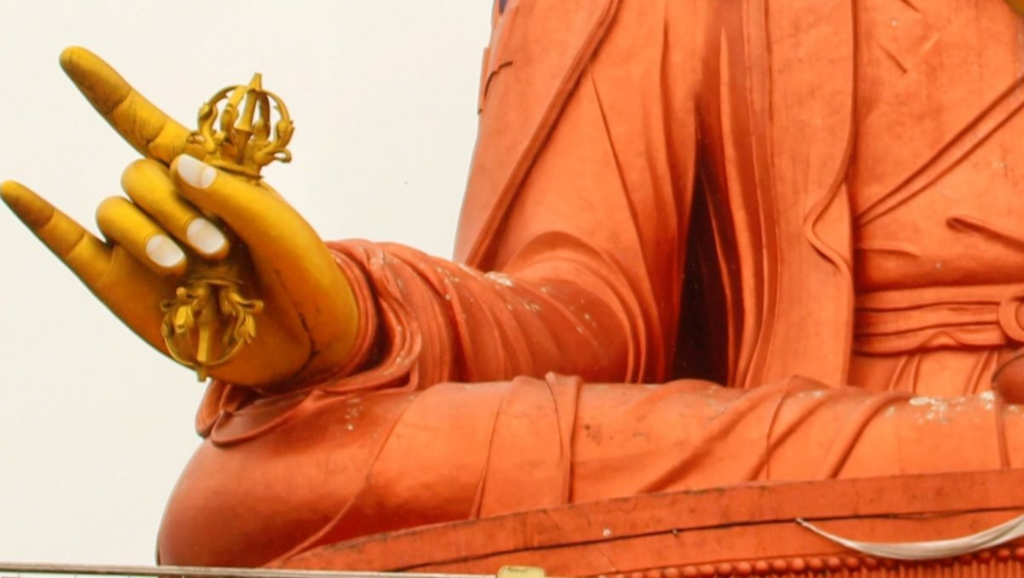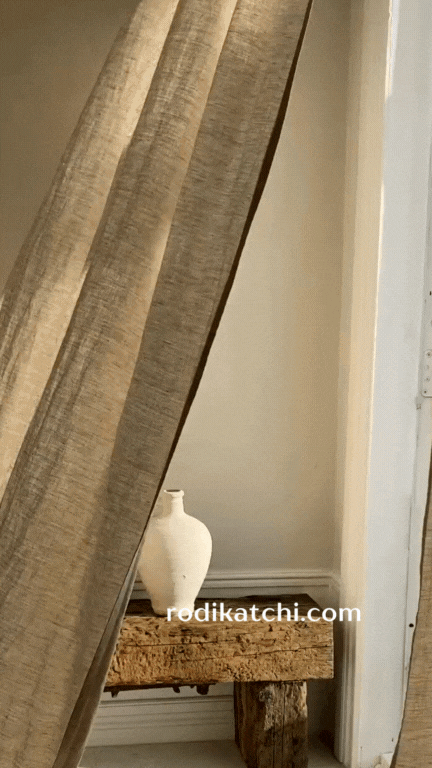Here are the best feng shui areas to place Buddha statues with these 10 mudras
Decorating a home with the serene energy of Buddha is one of the many beautiful additions that feng shui brought into the Western home decor. The focus on intentional decorating with powerful symbols is the basis of good feng shui work, and the serene and powerful Buddha energy holds a special space in this process. I am not a Buddhist but I am fascinated and deeply drawn to the many faces of Buddha, and have traveled to several Buddhist countries to feel and explore this energy more. In its essence, the energy of Buddha represents the human potential of escaping from the inevitable suffering that accompanies human life and reach a state of bliss and serene acceptance. It transmits the most healing energy of love for those who are ready to receive it and helps raise your consciousness above the mundane level void of sacredness and beauty.
Once you go deeper into exploring the many faces of Buddha, you will see that there is a variety of both male and female Buddhas (the word Buddha denotes an enlightened being, and not only the famed prince Gautama Buddha that left his privileged existence and vowed to find a cure for human suffering.) Some of the most popular Buddhas used in feng shui are the healing Medicine Buddha, the beautiful Kuan Yin, one of the first female Buddhas much revered in Asia, and the Laughing Buddha. We also have the many faces of beautiful Tara in all 21 colors (the ones most often used in feng shui home decorating are the White Tara and the Green Tara.)
When it comes to good feng shui decorating with the energies of Buddha, one of the main criteria to look at is the mudra, or hand gesture, that your chosen statue or image depicts. Knowing the specific energy of a mudra adds to the power of your Buddha decor item as a feng shui cure. To help you out, I want to share the 10 most popular Buddha mudras and their best feng shui placement in your home.
1.
Abhaya Mudra
No Fear
Abhaya is a Sanskrit term that means fearlessness. The Abhaya mudra is made with the open palm of the right hand extending outwards at the chest level or slightly higher. If you look at this Buddha hand gesture, or mudra, you will feel the energy of protection, peace, and a sense of calm strength and deep inner security. In these challenging times, the depiction of Abhaya mudra can be an excellent feng shui Buddha decor addition to any home. The best feng shui placement of Abhaya mudra is in the main entry, living room, or home office.
2.
Vitarka Mudra
Teaching Transmission
Vitarka mudra transmits the energy of higher teachings. It is made with the right palm facing outward at the chest level, the tip of the thumb touching the tip of the index finger. It is a transmission of a particular teaching with no words, it creates a constant energetic flow of wisdom. Similar in nature to Abhaya mudra, the energy created by this hand gesture allows for the direct transmission of knowledge in a protected way, without being blocked by words, prejudice or fear. It can raise one’s level of consciousness and instil a sense of peace and protection, as well as a deeper connection to one’s inner guidance. The best feng shui placement of Vitarka mudra is in the home office, library, meditation room, or study.
3.
Namaskar Mudra
Greeting and Adoration
Namaskar, or Namaskara mudra (also called Anjali mudra) is a hand gesture used to greet another being with the utmost respect and adoration. This is one of the most popular mudras, many of us know its meaning from taking yoga or meditation classes, The light in me salutes the light in you. This greeting is expressed in a form of prayer coming from one’s heart (if held at the chest level) or the third eye (if held at the eyebrow level). The Namaskar mudra can be depicted with palms either at the heart level or at the third eye/forehead. This mudra denotes that only the heart and the deeper spiritual insight accessed by the third eye make it possible to realize that we are all expressions of the same divine light. I’ve heard that true Buddhas no longer make this hand gesture—possibly because once you are merged with the light of the Divine, there is no longer a need to express adoration for it. When you are one with it, you do not see yourself as separate; you are it. The best feng shui placement of Namaskar mudra is in the main entry, living room or the center of your home.
4.
Vajrapradama Mudra
Confidence in Self
The meaning of Vajrapradama mudra is the mudra of unshakable self-confidence. However, this mudra expresses much deeper energy than our Western understanding of self-confidence. I come with peace because I am peace is one of the ways I feel its transmission. Similar in energy to the Namaskar mudra, the Vajrapradama mudra is pure expression of trust, faith, and confidence in one’s alignment with the divine source of all existence. I see Vajrapradama mudra emanating a glowing river of beautiful golden energy that is very healing, rich, loving and ever-flowing. This is not a gesture of individual self-confidence, but rather the confidence in the Universal Self that is part of Divine energy. When this genuine trust and confidence are present, the Heart becomes the strongest communicator. This is what this mudra evokes — the strength and confidence that comes from the connection with the Heart-Self. The Vajrapradama mudra is also a very protective mudra that encloses your energy field in a glow of soothing energy. In some representations of this mudra, the fingers are interlaced with the thumbs pointed toward the collar bones. The best feng shui placement of Vajrapradama mudra is in the heart of the home, the main entrance, or the entrance to your bedroom.
5.
Dhyana Mudra
Meditation and Contemplation
The Dhyana mudra (also called the Samadhi, or Heart Calming mudra) facilitates the energy of meditation, deep contemplation, and unity with one’s higher guidance. It is formed with your palms facing up and overlapping one another with the thumbs lightly touching. This is the mudra we use in the Six Stage Uplifting Chi Meditation. The circling of energy created by this mudra promotes the cleansing of any impurities. Just by looking at this Buddha hand gesture (let alone practicing it), one can access the energy of deep peace, calm and serenity. The best feng shui placement of Dhyana mudra is in the mediation room or near your altar.
6.
Varada Mudra
Compassion, Sincerity, and Wish-Granting
The beautiful Varada mudra transmits the energy of compassion, self-liberation, and an offering of gentle, authentic acceptance. This mudra is made with the left hand extended and facing downward, with the palm facing out. It is often seen in combination with other mudras made with the right hand, such as the Bhumisparsa mudra, the Vitarka mudra or the Abhaya mudra. The Varada mudra is called a boon-granting mudra because it helps bestow a specific quality of energy that one might be seeking from an enlightened being. In some depictions of this mudra, you can see a sacred shape, such as a mandala or an eye in the palm of the Buddha’s hand. This expresses the rarefied and powerful energy that emanates from an enlightened being through his or her hands. The best feng shui placement of Varada mudrais in the Northwest bagua area of your home, your dining room or your altar .
7.
Dharmachakra Mudra
Wheel of Dharma (Cosmic Order)
The Dharmachakra mudra transmits a continuous stream of energy that is expressed as a wheel, or chakra, of the cosmic order. In this mudra, the hands are placed at the heart level with the thumbs and index fingers forming circles (somewhat similar to Vitarka mudra). The right palm faces outwards and the left one faces towards the heart. The circle represents the wheel of dharma. This mudra is associated with Buddha’s first sermon with the meaning that the teachings on the cosmic order can only truly come from (or through) the Heart center. The best feng shui placement of Dharmachakra mudrais in the living room or the home office.
8.
Bhumisparsa Mudra
Calling the Earth to Witness the Truth
The Sanskrit translation of the Bhumisparsa mudra is Touching the Earth or Calling the Earth to Witness the Truth. This mudra is always depicted with the left hand facing upward in the lap (Varada mudra, as you know by now) and the right hand pointing downward, touching the earth. Bhumisparsa mudra is believed to be Buddha’s hand gesture (the historical Shakyamuni Buddha) when he achieved enlightenment under the Boddhi tree. At the moment when Mara, the demon, attempted to corrupt Buddha’s resolve to achieve liberation in the name of all beings, Buddha touched the ground, indicating that the Earth herself was bearing witness to his victory over the darkness of delusion (represented by Mara). In a way, the Bhumisparsa mudra is an honoring, as well as a symbol, of Buddha’s enlightenment. Energetically, this mudra transmits the energy that helps one overcome intense inner battles and transform them into higher wisdom and a sacred, strong and down to earth confidence. The best feng shui placement of Bhumisparsa mudra is in your living room, or the meditation room.
9.
Uttarabodhi Mudra
Supreme Enlightenment
The Uttarabodhi mudra is the mudra of Supreme Enlightenment. This mudra is formed with both hands placed at the heart level with index fingers touching and pointing upwards, while the other eight fingers are intertwined (or as in the variation of this mudra pictured above). The Uttarabodhi mudra is a hand gesture that clearly evokes a sense of unshaken unity when the individual self aligns with the Higher Self, the One Source. Performing the Uttarabodhi mudra for a few minutes creates an easily perceived shift in the subtle energy of one’s body, a sense of calm alignment, and centering. The best feng shui placement of Uttarabodhi mudra is in the North or South bagua areas of your home or office. It can also be placed in your meditation room.
10.
Karana Mudra
Banishing and Expelling Negativity
Karana mudra expresses extremely powerful energy that is able to expel any negative energy. Called the Mudra of Warding off the Evil, this hand gesture is used against any form of negativity, from actual experiences to subtle thoughts. One can sense a very calm, determined, focused energy just by looking at the depiction of this Buddha hand gesture. The Karana mudra is made with the right hand extended and fingers pointed upward, the thumb touching the tip of the second finger, while the middle two fingers are folded. Basically, this is an exorcism mudra, and as such it is used in some BTB feng shui school more mysterious cures, such as the Three Secrets Reinforcement, for example. If you have an image of Buddha making the Karana mudra, be very mindful about its placement in a home or office. You do not want it to face the front door (which should have welcoming energy). By the same token, you do not want it in your bedroom or in your child’s room. The best feng shui placement is in a bagua area that needs strong energetic clearing, or in a problematic area of the house such as for example, near windows that face a back alley with low energy.
This concludes our feng shui exploration of the 10 most popular Buddha mudras. Have you decided which one is best for you and your home?


